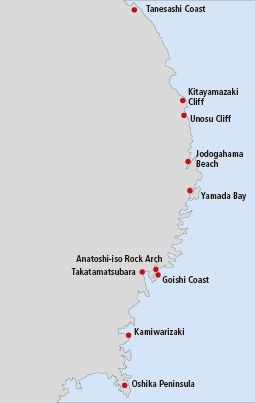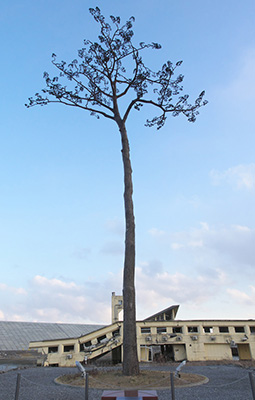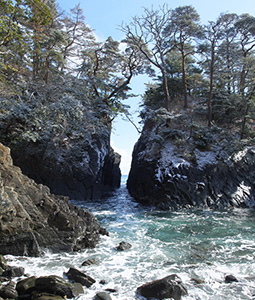Home > Highlighting JAPAN > Highlighting Japan March 2018 > National Parks
Highlighting JAPAN
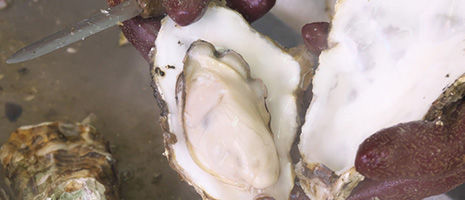
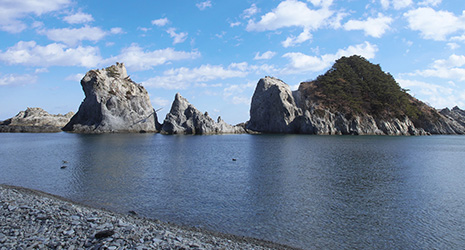
- PREVIOUS
- NEXT
Eco-tourism in the “Reconstruction” National Park
Sanriku Fukko (Reconstruction) National Park, which extends about 220 kilometers north and south from southern Aomori Prefecture to the Oshika Peninsula in Miyagi Prefecture, is a national park that aims to pass down the reconstruction following the Great East Japan Earthquake and the damage caused by it from generation to generation.
Sanriku Fukko (Reconstruction) National Park is a park featuring a varied beautiful rias coastline. This national park was designated as Rikuchu Beach National Park in 1995 and attracted about 4.07 million visitors in 2010. In 2013, the park was designated as Sanriku Fukko (Reconstruction) National Park to contribute to the reconstruction of the Sanriku area that was damaged by the Great East Japan Earthquake in 2011.
If you drive one and a half hours by car northeast of Sendai, the largest city in the Tohoku region, you will reach a beautiful spot called Kamiwarizaki in Minamisanriku Town that faces the Pacific Ocean. The name Kamiwarizaki was derived from the legend that God became angry at a quarrel between two villages, and ripped a huge rock apart, separating the villages. There is a beautiful sunrise twice a year—in mid-February and late October—in the gap between the two rocks at Kamiwarizaki, where wild waves roll in.
In Rikuzentakata City, Iwate Prefecture, which is located north of Minamisanriku, there used to be Takatamatsubara, with a two-kilometer stretch of pine forests on a white beach. Afforestation began about 350 years ago, when trees were planted to protect the shoreline. It was a place of scenic beauty, where about 70,000 pine trees grew, and it attracted 1.09 million tourists in 2009 before the earthquake. The tsunami washed away Takatamatsubara, forests and all. Miraculously, however, a sole pine tree remained and became a form of emotional support for the local people. Unfortunately, this last pine tree withered, but preservative treatment and reinforcement were applied to it, and the tree is preserved as the “Miracle Lone Pine Tree,” a monument that symbolizes the reconstruction efforts from the damage caused by the earthquake. Currently, a project for planting 40,000 pine trees by 2019 is underway to restore Takatamatsubara.
In the Suesaki Peninsula in Ofunato City, which is located on the northeastern side of Takatamatsubara, the Goishi Coast, where stone-shaped round pebbles like go stones extend along the peninsula, and the Anatoshi-iso Rock Arch where there are many triangular rocks protruding from the surface of the sea, are popular tourist destinations. In particular, you can enjoy sailing on a pleasure boat through three large holes that were created by the erosion of seawater at the Anatoshi-iso Rock Arch.
If you travel north from Ofunato to Miyako City, the landscape with a wild coastline until then will change dramatically and you will see Jodogahama Beach with a grove of pine trees atop sharply pointed white rhyolite rocks in an extremely transparent blue sea with gentle waves. Jodogahama Beach was named after the fact that in the eighteenth century, a priest of great sanctity who viewed the magnificent, beautiful beach said that it was just like Gokuraku-Jodo Pure Land.
Sanriku Beach is also known for its numerous fishing grounds, and Yamada Bay, where oyster cultivation is active, is located south of Jodogahama Beach. This bay was also seriously damaged by the tsunami. But local fishermen made great efforts to reassemble the cultivation rafts that were not lost and assemble new rafts using local timber from forest thinning, which led to the cultivation rafts floating in the bay again. The oysters harvested in Yamada Bay have a firm body, and you can enjoy dynamically steaming open and eating fresh oysters in their shells that are cooked in oyster huts erected along the beach.
Sanriku Fukko (Reconstruction) National Park offers even more attractions. You can also enjoy viewing the beautiful landscape of the beaches and the superb views, eating all sorts of delicacies from the land and sea and numerous activities, such as bathing in the sea and mountain-climbing. For example, the Tanesashi Coast in Hachinohe City, Aomori Prefecture, which is located in the northernmost part of the park, features beautiful natural grass that stretches along a beach; Tanohata Village, Iwate Prefecture, which is located about 70 kilometers to the south, features Kitayamazaki Cliff, known as the “Alps of the Ocean,” where cliffs about 200 meters high extend for eight kilometers. In addition, you will also be overwhelmed by the Unosu Cliff, which is shaped like the teeth of a saw along with untouched nature 10 kilometers to the south.
Tourists are now returning to the park that was created to pass down the damage caused by the tsunami and the reconstruction efforts from the damage from generation to generation, and the park is visited by an increasing number of people who come to undertake disaster damage control education from around the country.
In Sanriku Fukko (Reconstruction) National Park, the Michinoku Coastal Trail, which connects Hachinohe and Matsukawaura, a beauty spot in northern Fukushima Prefecture, is being built with the aim of opening all its routes by March 2019. This is a natural promenade where people can experience local nature and lives connecting the scars from the disaster. It is intended to pass down the importance of the connections between the forests, the countryside, rivers and seas that make up the rich nature of Sanriku, where eco-tourism can be enjoyed.
With its designation as Sanriku Fukko (Reconstruction) National Park, the Sanriku area is being reborn as an even more attractive park in addition to passing down the reconstruction efforts from the disaster and the damage caused by it.
- PREVIOUS
- NEXT
© 2009 Cabinet Office, Government of Japan
